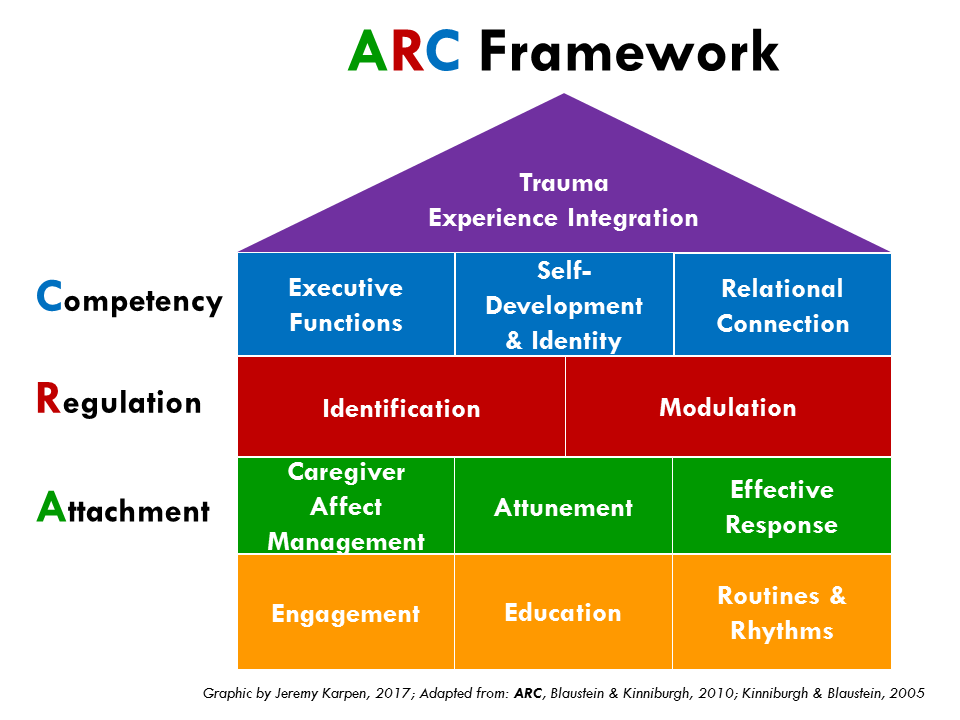ARC Attachment Regulation Competency: A Journey to Healing Introduction: In our fast-paced world, it's important to acknowledge the impact of attachment and trauma on individuals of all ages. Attachment refers to the deep emotional bond between a child and their caregiver, forming the foundation for future relationships throughout life. However, when this bond is disrupted or harmed, it can lead to significant challenges in emotional regulation and overall well-being. At Hertfordshire County Council, we understand the importance of providing attachment and trauma-specific treatment to individuals of all ages. Our Attachment Regulation Competency (ARC) approach aims to empower individuals to heal from past traumas and develop essential skills for thriving in their daily lives. In this article, we will explore the transformative power of ARC and how it can help you or your loved ones embark on a journey towards healing and resilience. 1. Understanding Attachment and its Impact: Before delving into the ARC approach, it's crucial to grasp the significance of attachment and how it shapes our lives. Attachment begins in infancy, as babies develop a deep emotional connection with their primary caregivers. This bond plays a vital role in the child's emotional, social, and cognitive development. However, traumatic experiences, neglect, or inconsistent caregiving can disrupt the attachment process. This disruption can lead to a range of challenges such as difficulty forming and maintaining relationships, emotional dysregulation, and a diminished sense of self-worth. 2. The ARC Approach: Building Competency and Resilience: The Attachment Regulation Competency (ARC) approach is a comprehensive model that focuses on helping individuals develop essential skills for emotional regulation, sustaining relationships, and overall well-being. The three pillars of ARC are attachment, self-regulation, and competency. a) Attachment: The ARC model acknowledges the significance of repairing attachment disruptions. By working with a trained therapist, individuals can explore past attachment experiences and gain a deeper understanding of the impact these experiences have had on their lives. Through a combination of therapy techniques, individuals can heal attachment wounds and foster healthier relationships. b) Self-regulation: Emotional dysregulation is a common challenge faced by individuals who have experienced trauma. ARC equips individuals with effective strategies to manage their emotions, increase distress tolerance, and regulate their responses to triggers. Through various therapeutic interventions, individuals gain the tools necessary to navigate life's challenges with resilience and composure. c) Competency: Building competency involves developing essential skills for successful daily functioning. The ARC approach emphasizes the importance of acquiring practical life skills, problem-solving abilities, and positive coping mechanisms. By focusing on developing competency, individuals become better equipped to handle stress, build healthy relationships, and achieve their goals. 3. The Healing Power of ARC: Real Life Stories: To provide a deeper understanding of the transformative powers of ARC, let's explore two real-life stories of individuals who have benefited from this approach. a) Emma's Journey to Healing: Emma, a young woman in her twenties, had experienced a traumatic childhood. She struggled with trust, forming intimate relationships, and managing her emotions. Through ARC therapy, Emma gradually rebuilt her ability to trust and connect with others. She learned effective emotion regulation techniques, enabling her to navigate challenging situations without feeling overwhelmed. Today, Emma leads a fulfilling life, maintaining healthy relationships and pursuing her passion for art. b) Mark's Resilience Over Trauma: Mark, a middle-aged man, had endured significant trauma throughout his life. He struggled with addiction, anger outbursts, and self-destructive behaviors. Through ARC therapy, Mark gained a deeper understanding of the underlying reasons for his behaviors. He acquired vital self-regulation skills that helped him successfully manage his anger and overcome addiction. Mark has now become an advocate for trauma survivors, spreading awareness and inspiring others on their journey to healing. 4. The ARC Approach FAQs: a) Who can benefit from ARC therapy? ARC therapy is beneficial for individuals of all ages who have experienced attachment disruptions or trauma. It can particularly benefit children, adolescents, and adults who struggle with emotional regulation, forming and maintaining relationships, and overall well-being. b) How long does ARC therapy usually last? The duration of ARC therapy varies based on individual needs. Some individuals may benefit from shorter-term therapy, while others may require more extended support. A skilled therapist will assess the specific needs of each individual and devise a tailored treatment plan accordingly. c) Is ARC therapy effective for adults who experienced childhood trauma? Absolutely! ARC therapy is designed to address attachment disruptions and trauma at any stage of life. Whether an individual experienced trauma in childhood or later in life, ARC can help them develop crucial skills for healing and resilience. 5. Conclusion: Embracing Healing and Resilience with ARC The ARC Attachment Regulation Competency approach offered by Hertfordshire County Council provides a comprehensive and effective path to healing for individuals of all ages. By focusing on attachment, self-regulation, and competency, ARC equips individuals with the skills necessary to navigate life's challenges, form meaningful relationships, and achieve personal growth. If you or someone you know is struggling with attachment disruptions or the effects of trauma, ARC therapy offers hope and transformation. Reach out to our dedicated team at Hertfordshire County Council to embark on your own journey towards healing, resilience, and a brighter future. Remember, healing is possible, and ARC can guide you on your path to a more fulfilling and resilient life.
Attachment, Regulation And Competency (ARC) – Improving Outcomes, LLC.
 Image Source : improvingoutcomes.wordpress.com
Image Source : improvingoutcomes.wordpress.com competency
ARC | Hertfordshire County Council | Www.hertfordshire.gov.uk
 Image Source : www.hertfordshire.gov.uk
Image Source : www.hertfordshire.gov.uk hertfordshire arc gov county council competency regulation attachment
Attachment And Trauma-Specific Treatment For All Ages - Lori Gill
 Image Source : www.holisticwellnessforhealth.com
Image Source : www.holisticwellnessforhealth.com attachment trauma regulation competency self arc model treatment centre healing
Attachment, Self-regulation, And Competency (ARC): A Framework For
 Image Source : www.researchgate.net
Image Source : www.researchgate.net competency blaustein publication
Attachment, Regulation, And Competency (ARC) Framework | Therapist.com
 Image Source : therapist.com
Image Source : therapist.com Putting The 'ARC' In 'Cathartic': Attachment, Regulation & Competency
 Image Source : www.vanitywellnesscenter.com
Image Source : www.vanitywellnesscenter.com Attachment, Regulation & Competency (ARC) | Your Experiences Matter
 Image Source : yourexperiencesmatter.com
Image Source : yourexperiencesmatter.com arc attachment competency regulation house trauma training blocks building kinniburgh informed blaustein 2005 graphic parent tfc curriculum services
Attachment, Regulation, And Competency (ARC) Framework For Treating
 Image Source : www.youtube.com
Image Source : www.youtube.com arc framework trauma attachment competency regulation
Attachment, regulation, and competency (arc) framework for treating. Attachment, regulation and competency (arc) – improving outcomes, llc.. Arc framework trauma attachment competency regulation. Arc attachment competency regulation house trauma training blocks building kinniburgh informed blaustein 2005 graphic parent tfc curriculum services. Competency blaustein publication
 Image Source : improvingoutcomes.wordpress.com
Image Source : improvingoutcomes.wordpress.com  Image Source : www.hertfordshire.gov.uk
Image Source : www.hertfordshire.gov.uk  Image Source : www.holisticwellnessforhealth.com
Image Source : www.holisticwellnessforhealth.com  Image Source : www.researchgate.net
Image Source : www.researchgate.net  Image Source : therapist.com
Image Source : therapist.com  Image Source : www.vanitywellnesscenter.com
Image Source : www.vanitywellnesscenter.com  Image Source : yourexperiencesmatter.com
Image Source : yourexperiencesmatter.com  Image Source : www.youtube.com
Image Source : www.youtube.com